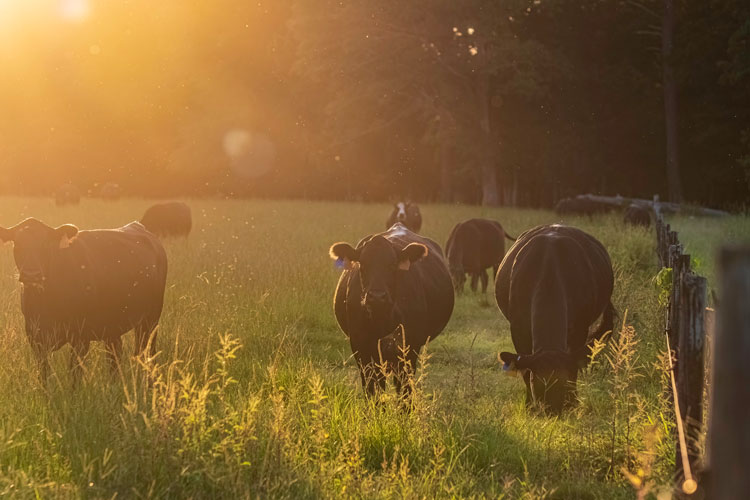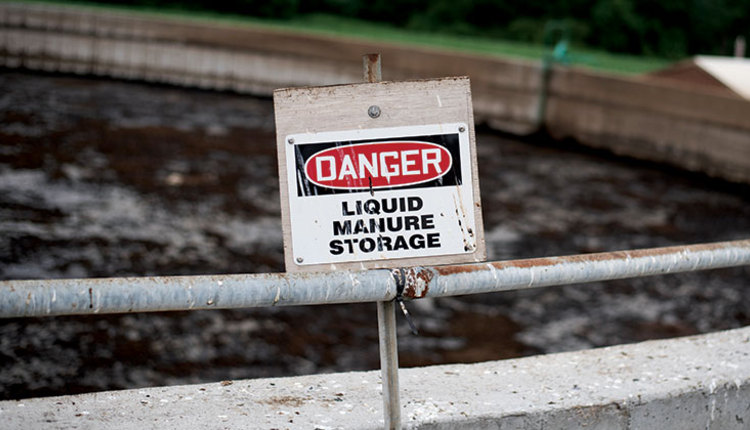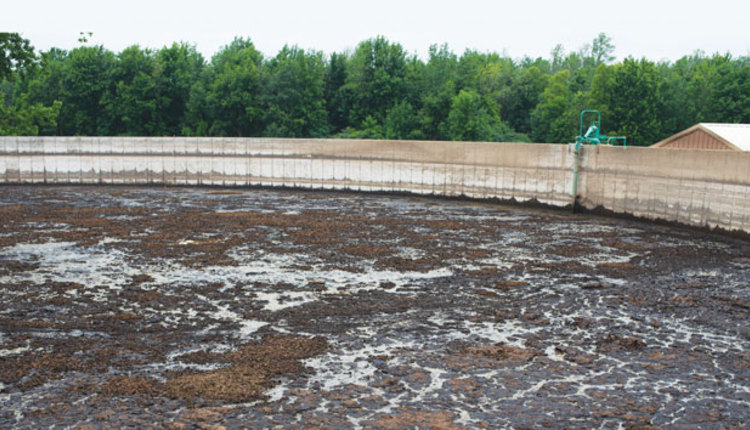The author is a freelance writer from Monroe, Wis. She owns Denim Works LLC.

Sustainability is a word we hear all the time, but what does it mean for animal agriculture? No one program or initiative encompasses all of agriculture, but that doesn’t mean that progress isn’t being made.
Take the poultry industry, for example. According to the American Egg Board, between 1960 and 2010, the egg industry enhanced efficiency while reducing its carbon footprint, including a 71% reduction in greenhouse gas emissions and using 31% less energy. Still, there is more work to be done and improvements to be made in how we measure and track sustainability efforts.
That is why the organization conducted a life cycle evaluation, measuring the use of water, land, and energy; levels of carbon dioxide emissions; waste; and more. It’s a way of calculating the environmental impact across the industry using validated and science-based formulas.
Verifying pork’s commitment
“Sustainability looks different to everyone, depending on perspective. It looks different to Pepsi, it looks different to Walmart, and it looks different to pig farmers,” said Marguerite Tan, director of environmental programs for the National Pork Board, during a webinar hosted by the Livestock and Poultry Environmental Learning Community.
“I think of sustainability as a vehicle, driving to the same location,” she continued. “We are driving different makes and models, and we are taking different routes, and that’s okay.”
For the pork industry, Tan said their efforts are best defined using the United Nations’ sustainability goals. “The United Nations created a global framework for alignment and communication of sustainability through 17 goals, including zero hunger and responsible consumption and production,” she explained. “The United Nations defines sustainability as meeting the needs of the present without compromising the ability of future generations to meet their own needs.”
To align with these goals, the National Pork Board leveraged the pork industry’s existing We Care Ethical Principals, which was a program established more than a decade ago. It is based on producer commitments to continuous improvement. This program focuses on six key areas: food safety, the environment, people, animal well-being, public health, and community. Overall, a holistic approach is taken when defining goals, realizing that raising pigs is a biological process and has a delicate balance to ensure the best quality of life.
“Everything is interconnected,” Tan said. For example, she said that reducing stocking density may raise heat and fuel needs in a barn. “We need to balance impacts from one area on another.”
The We Care program is a producer-led initiative that unifies the voice of the pork industry and provides third party verification. Since the program is 100% voluntary, it focuses on farm practices that are practical, affordable, and easily implemented.
In late 2021, the National Pork Board launched the Pork Cares Farm Impact Reports powered by the Eco-Producer Platform to track data, measure improvement, and provide third-party verification. These reports are available to producers nationwide. In addition to the Pork Cares Farm Impact Reports, in 2023, the We Care Application was launched. This application is a data warehouse which aggregates data collected in the Pork Cares Farm Impact Reports and via other platforms to ensure the accuracy of the pork sustainability story and provide benchmarks against the pork industry’s sustainability goals and metrics, such as land use, carbon footprint, and biodiversity, to name a few. The Pork Board is using these metrics as a springboard to develop continuous sustainable improvement plans and show overall sustainability progress.
“This framework is focused on real pigs, real pork, and real sustainability,” says Tan. “We are confident we can show proof of our commitment to continuous improvement and sustainability.”
The pork industry has already made strides in efficiency. According to Tan, we need almost 20% fewer pigs today than we did to produce the same amount of pork in the 1990s. That equates to 25.9 million fewer hogs.
Tools for the beef supply chain
Founded in 2015, the U.S. Roundtable for Sustainable Beef has a mission to advance, support, and communicate continuous improvement of sustainability across the nation’s beef value chain.
“The U.S. beef value chain is the trusted global leader in environmentally sound, socially responsible, and economically viable beef,” stated Samantha Werth, Ph.D., executive director of the U.S. Roundtable for Sustainable Beef. This volunteer-led and member-run organization has 145 members across all sectors of the beef industry, including cattle producers, packers, processors, retailers, restaurants, civil society, and more.
The organization identified six high-priority indicators of sustainability across all sectors of the beef industry, including water resources, land resources, air and greenhouse gas emissions, employees and well-being, animal health and well-being, and efficiency and yield. The key indicators build upon the primary pillars of sustainability — environmental, social, and economic — emphasizing well-rounded sustainability at each stage of the beef supply chain.
The USRSB developed sustainability assessment guides for each of the member sectors of the industry. These guides are fact- and science-based and provide key performance indicators. Each sector helped develop their own assessment guide, leading to greater support and implementation. The guides were open to public comment and received a number of revisions over two years before final approval by all members in 2019.
In 2022, the USRSB launched their High-Priority Indicator Goals and Sector Targets for the entire beef supply chain. The goals, also centered around the six key indicators, include targets for each sector, specific to the needs and opportunities of each part of the supply chain. These goals and targets aim to identify and supplement sustainability practices and support the collection of benchmarking data for current industry sustainability efforts.
“The USRSB goals and targets are unlike any others. They aim to enhance beef industry sustainability from farm to table and provide an opportunity for fully supply chain collaboration,” said Werth.
To help the industry work toward achieving these goals, USRSB continues to create and build upon their existing free tools and resources. The USRSB offers a self-assessment tool for individual users. This tool measures users against the benchmarks provided in the guides and offers opportunities for improvement. For ease of use, the guides, benchmarks, and self-assessment tools were brought together under the U.S. Beef Industry Sustainability Framework.
The USRSB also offers a sustainability module series based on the Framework. The interactive series incorporates the USRSB self-assessment tool around key indicators and metrics to help industry professionals recognize areas where they excel and offer solutions in the areas which need further development. The modules are available to each sector of the beef supply chain. In May of 2023, USRSB launched a Grazing Management Plan learning module, focused on providing producers with science-based guidance on key grazing principles and development of written GMPs — a critical component to USRSB’s goals efforts. All USRSB resources can be accessed at USRSB.org.
Dairy looks to the future
The Innovation Center for U.S. Dairy has a vision that the American dairy industry can be an environmental solution, and that is possible, according to Karen Scanlon of Dairy Management Inc., which manages the national dairy checkoff. “By 2050, the U.S. dairy industry collectively commits to achieve GHG neutrality or better, optimizing water use while maximizing recycling, and improving water quality by optimizing the utilization of manure and nutrients,” she noted.
The year 2050 is nearly 30 years away, but that doesn’t mean there isn’t a lot of work going on right now. That includes the U.S. Dairy Net Zero Initiative (NZI), a collaboration of dairy organizations and partners to advance research and technology, on-farm pilots, and new market development. This is an essential first phase to accelerate progress toward the 2050 environmental goals.
NZI is about breaking down barriers to empower all farms to reduce their environmental impact – in an economically viable way that positions them to thrive for generations to come. Overall, NZI is designed to accelerate progress toward the three goals listed above.
Realistically, Scanlon said not every farm can achieve GHG neutrality status, but the effort is collective across farms of every size and management style. NZI is designed to offer a range of practices and recommendations depending on size, location, technology, and more.
There are four key areas of focus in the initiative:
- Enteric methane
- Feed production changes
- Manure
- Energy
Each of these focus areas encompass practices that can be incorporated on farms of various sizes, and these opportunities present on-farm and off-farm benefits.
“NZI is working to close knowledge gaps and advance innovation by focusing across the four key areas of dairy production,” Scanlan said. “The practices and technologies needed to reach the goals largely exist, but they require further development, investment in operational changes, and advanced technical assistance.”
Collaboration across the industry is important. To date, NZI has leveraged $37.7 million in support. Major partners and collaborators include Nestle, Starbucks, Foundation for Food and Agriculture Research, and The Nature Conservancy. Additionally, NZI is putting the plan into action by partnering with a series of farms of various sizes and geographies to prove the viability of practices and identify the key lessons learned.
“This work is accelerating progress across the entire U.S. dairy industry,” Scanlan concluded. “It is incredibly gratifying to be a part of such a large-scale initiative supporting all U.S. dairy producers.”






